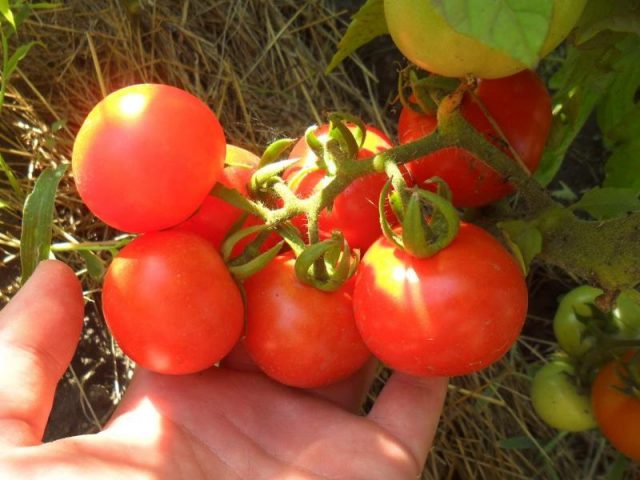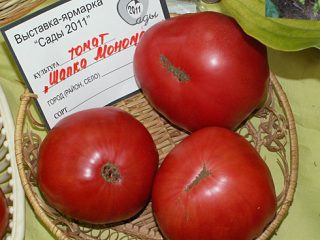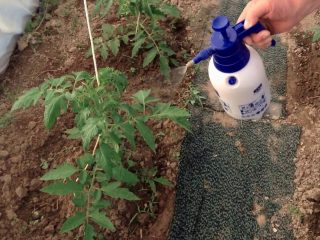Content
Tomato Sultan F1 of Dutch selection is zoned for the south and middle of Russia. In 2000, the variety was entered in the State Register of the Russian Federation, the originator is the Bejo Zaden company. The rights to sell seeds are assigned to the Russian companies Plasma Seeds, Gavrish and Prestige.
Description of tomato Sultan F1
The mid-early hybrid tomato variety Sultan F1 of the determinant type is recommended for growing in greenhouses and open ground. The technical ripeness of tomato fruits occurs in 95 - 110 days from the moment of germination. It takes about two more weeks for the tomatoes to fully ripen.
A low bush (60 cm) covered with dark green leaves. Simple inflorescences consist of 5 - 7 light yellow flowers, collected by a brush at the joints.
The dense non-standard stem of this tomato variety does not need a garter.
Description of fruits
Beef type tomatoes reach a mass of 180 g. Fleshy fruits, bright red in full maturity. They contain a small amount of seeds in 5 - 8 seed chambers. The shape of the tomato of this hybrid variety is rounded with a slight ribbing at the stalk.
Ripe Sultan tomatoes contain up to 5% dry matter and up to 3% sugar. Rich in vitamins and amino acids, tomatoes taste sweet.
Sultan F1 is classified as a universal variety. The fruits are suitable for salads and pickling.
Characteristics of the Sultan F1 variety
Sultan F1 is a high-yielding variety. When creating optimal growing conditions, the yield from one bush can reach 4 - 5 kg.
The extended period of fruiting allows you to increase the yield of tomatoes when grown in greenhouses and film shelters.
According to the characteristic, the tomato variety Sultan F1 is drought-resistant. The crop bears fruit even on soils with a low level of fertility.
The plant is resistant to most specific tomato diseases.
Advantages and disadvantages
According to reviews and photos of those who planted a tomato of the Sultan variety, it is easy to determine the advantages of the variety:
- unpretentiousness;
- high productivity;
- long fruiting period;
- excellent taste characteristics;
- disease resistance;
- good transport tolerance;
- high keeping quality.
Vegetable growers attribute the inability to collect seeds of the Sultan tomato variety as a disadvantage.
Growing rules
Sultan tomatoes are grown in seedlings. In southern regions with a long period of high air temperatures, you can harvest tomatoes by direct sowing of seeds into the ground.
Planting seeds for seedlings
The seeds of the Sultan F1 hybrid are being prepared and tested for germination. Therefore, pre-soaking in water or seed germination accelerators is not recommended.
By the time the tomatoes are planted in the ground, the seedlings should have reached the age of 55 - 60 days.
To obtain high-quality planting material, the soil should be chosen lightweight and breathable. It is recommended to use a soil mixture of equal parts turf, river sand and peat with a neutral acidity level.
For germinating tomato seeds, low containers with holes in the bottom are suitable. This requires:
- Fill the box halfway with soil.
- Lightly compact the soil and cover with warm water.
- Spread the seeds at a distance of about a centimeter from each other.
- Sprinkle with a layer of soil at least 1 cm.
- Cover with foil.
- Germinate at a temperature not lower than 22 - 24 degrees.
With the appearance of the first shoots, remove the film, put the seedlings in a bright place.
Tomatoes easily tolerate transplanting. Plants can be dived into separate glasses or boxes of several pieces.
The picking of seedlings is carried out with the development of two true leaves in a highly moistened soil.
After transplanting, it is recommended to install containers with tomatoes for 2 - 3 days away from direct sunlight.
Before planting tomatoes in a permanent place, it is necessary to feed the plants with complex fertilizer at least twice.
To improve the development of the root system, you can use special root-forming dressings "Kornevin", "Zircon" or any other growth stimulants. Top dressing helps to form a strong root system and accelerates the development of healthy seedlings.
It is necessary to water the seedlings with water at room temperature regularly, avoiding the drying out of the earthy coma.
Before planting in the ground or greenhouse, the plants should be hardened. To do this, the temperature in the room is reduced gradually by 1 - 2 degrees. If the weather permits, then the boxes with seedlings can be taken out into the open air. The temperature should not be lower than 18 degrees. Carry out hardening, uniformly increasing the period of exposure to low temperatures.
Transplanting seedlings
In open ground, tomato seedlings can be planted only after the threat of spring frosts has passed. When the temperature drops below 10 degrees, you need to use film shelters.
Compact tomato bushes of the Sultan variety are planted in a greenhouse according to the scheme: 35 - 40 cm between bushes and about 50 cm between rows. Landing can be done in a checkerboard pattern.
The soil must be loosened to a depth of 30 - 40 cm. In the holes prepared according to the marking, compost or rotted manure should be poured at the rate of 0.5 liters per plant.
It is important to water the seedlings and holes prepared for planting with plenty of water.
Landing Algorithm:
- Remove the seedling from the seedling container.
- Shorten the main root by one third.
- Install in the hole.
- Sprinkle with soil to a height of the stem up to 10 - 12 cm.
- Compact the soil around the plant.
It is advisable to plant tomatoes in the evening or in cloudy weather.
Follow-up care
The entire growing season of tomatoes must be monitored for soil moisture. Regular watering, interspersed with loosening the soil around the bushes, will help speed up flowering and ovary development.
10 days after planting the seedlings in a permanent place, it is necessary to fertilize with a complex fertilizer containing phosphorus, potassium and trace elements. To form a bush, nitrogen is also required to build up green mass. It is recommended to use nitroammophoska or calcium nitrate. The method of application of the fertilizer and dosage are indicated on the package of the preparation.
Bushes of the Sultan F1 tomato variety do not need to be tied up. Low-growing tomatoes with a thick elastic stem perfectly support the weight of the fruit.
Experts advise to form a bush in 2 trunks. But, according to reviews about the tomato Sultan F1, with a sufficient level of soil fertility and proper care, you can increase yields by leaving an additional stepson.
Patching should be carried out regularly, avoiding the regrowth of lateral shoots. Removing large stepchildren threatens the plant with stress, which negatively affects development and productivity.
For the second and third feeding, which can be carried out at intervals of 2 weeks during fruit setting, it is recommended to use a complex of minerals with a high content of potassium and phosphorus. Nitrogen fertilizers should be avoided. With an excess of them, tomatoes begin to intensively increase the green mass to the detriment of the fruits.
With the simultaneous development of a large number of fruits, part of the unripe tomatoes must be removed from the bush. Sultan tomatoes, according to reviews, can ripen in a dark place, packed in cardboard boxes.
To protect against fungal diseases in the greenhouse, it is necessary to provide the tomatoes with stable ventilation. Sultan tomatoes tolerate drought more easily than excessive moisture. In order to prevent diseases, the bushes can be treated with a solution of Bordeaux liquid, Quadris, Acrobat or Fitosporin preparations. Subject to the norms and terms of processing, the drugs are safe.
It is recommended to use standard chemical and biological agents to protect plants from whiteflies, ticks, aphids and the Colorado potato beetle.
Conclusion
Tomato Sultan F1, due to its unpretentiousness, is suitable for growing novice vegetable growers. A fairly high yield of tomatoes of this variety is obtained even under adverse weather conditions. A thick tasty juice is made from bright sweetish-sour fruits. Smooth tomatoes look great in jars of pickles.











